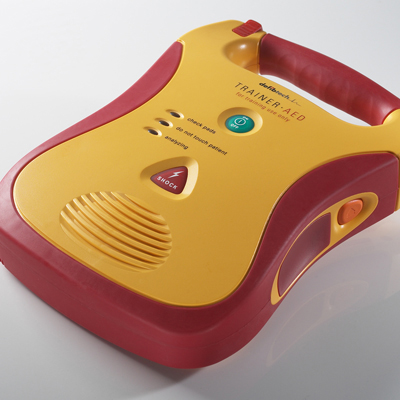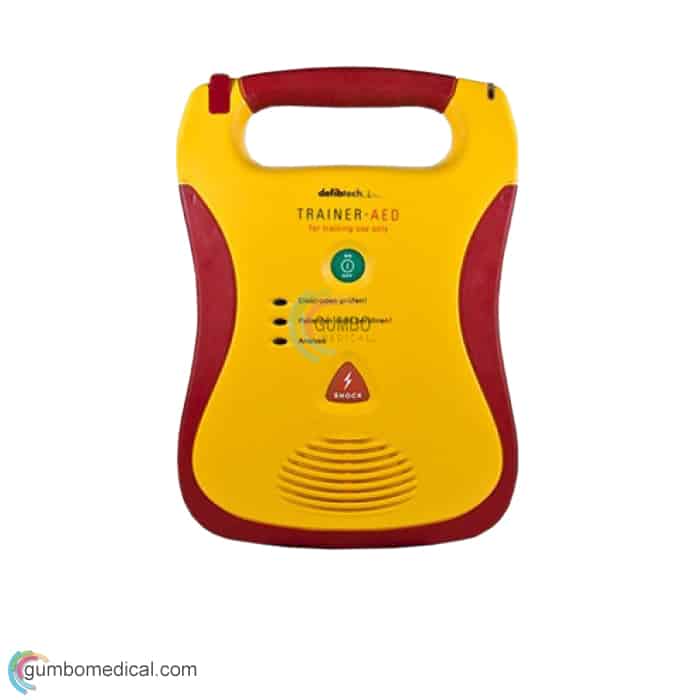

Ensure that no part of the patient’s body is submerged in water.
#Aed stands for skin
The fact that a defibrillator sends live voltage to a patient’s heart makes it important that no one comes into direct contact with the patient’s skin during this critical period of time. Instruct any observers to keep their distance as well. Remove your hands from the patient’s skin and step back a few steps before delivering the shock. Find out more in our complete guide to AED and CPR here Only administer CPR and defibrillation if the person is not breathing and is not responding to your commands. Check for evidence of breathing after that. If someone is in cardiac arrest, they will be unresponsive, with no detectable pulse and no breathing or only gasping for air.īegin by calling out the victim’s name and asking for a response while gently shaking the victim’s shoulders. An AED should be used only on someone who is unconscious and not breathing due to abrupt cardiac arrest.It should never be used on a patient who is still aware and breathing after suffering a heart attack. The initial step is to ascertain whether a defibrillator is indeed necessary. The AED will confirm the lack of a pulse and the need for defibrillation. If a pulse is not evident, the device can then be set up and activated to determine if there is any heart activity at all.
#Aed stands for how to
This blog post will demonstrate how to use a defibrillator safely and effectively.ĪEDs should not be used on a victim if a pulse can still be felt, as it could worsen their condition. While anyone may use an AED, there is a slight learning curve to consider, especially many safety aspects.ĭue to the fact that AEDs provide an electrical shock to the heart muscles, improper use can be harmful to both the caregiver and the individual on whom the AED is being used. churches and other areas without qualified medical staff. Therefore, it is essential that we adhere to a few strict AED safety tips to ensure safety.ĪEDs are commonly found in homes, offices. However, everyone who comes into contact with the person undergoing AED treatment (or water or metal the patient may come into contact with) is at risk of receiving an electric shock.

In simple words, when someone experiences sudden cardiac arrest, AEDs are used that results in increasing survival rate. They are designed to be user-friendly by following a few easy steps, you can potentially save the life of someone who has suffered a cardiac arrest. Level A: not available Level C : 3.5 hoursīlended CPR Level C: 2 hours online learning and 2.An Automated External Defibrillator, or AED, is used to help restore the heart’s normal rhythm using electrical impulses. Certificationģ-year certification in CPR Level A or C Recertification passing grade on a written, closed book knowledge evaluation and adherence to the Fundamental Principles. Red Cross CPR Instructor or First Aid Instructor CompletionĪbility to comprehend and successfully demonstrate all required skills, including critical steps ġ00% attendance and participation 75% min.

Courses meet legislation requirements for provincial/territorial worker safety and insurance boards, and include the latest CPR guidelines and training in the use of an automated external defibrillator (AED). Blended CPR A: 3 hours online learning, 2 hours teaching time Blended CPR C: 3 hours online learning, 3 hours teaching timeĬourses on cardiopulmonary resuscitation (CPR) provide the skills needed to recognize and respond to cardiovascular emergencies and choking for adults, children, and babies depending on the level of CPR chosen.


 0 kommentar(er)
0 kommentar(er)
